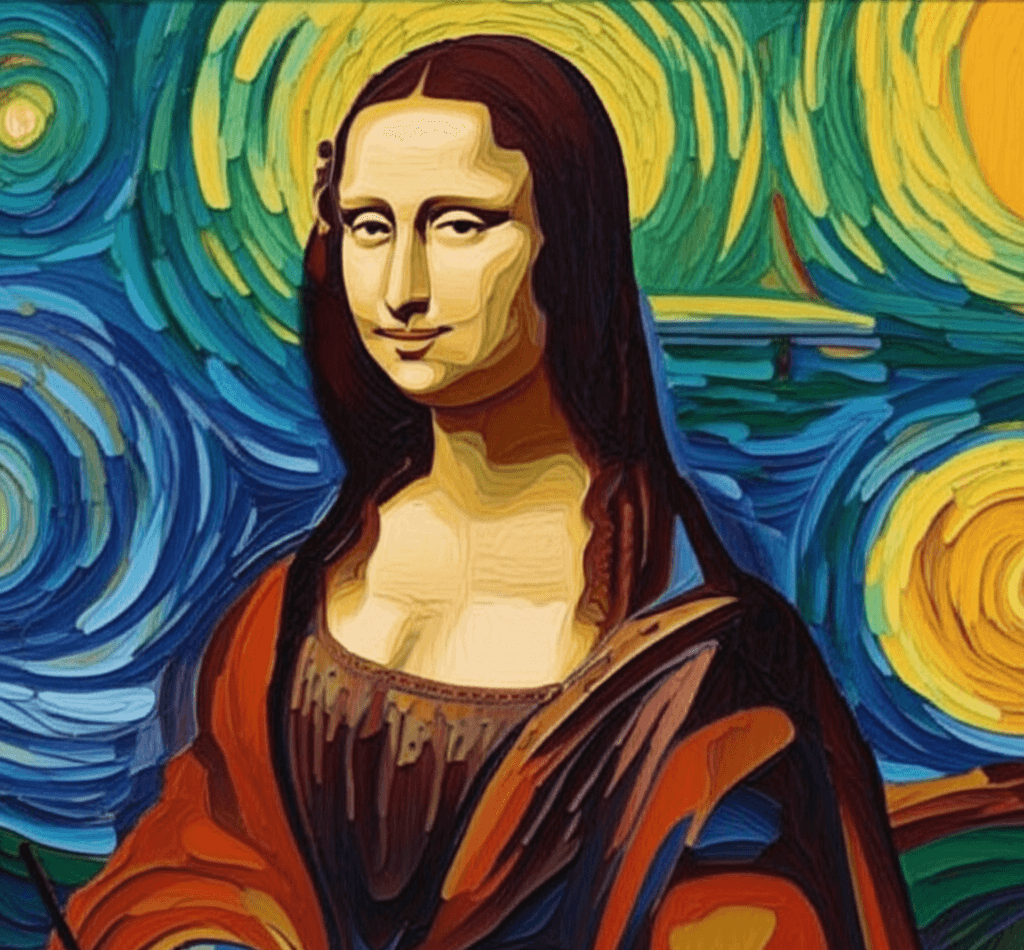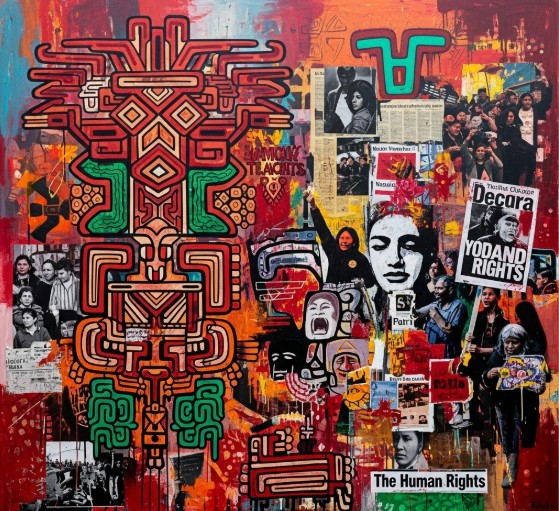Art and Religion: Exploring Sacred Art Across Cultures
Introduction
Since the dawn of civilization, art and religion have shared a profound and inseparable bond. Across continents and belief systems, sacred art has functioned as a powerful expression of spirituality, devotion, and cultural identity. From the stained-glass cathedrals of Europe to the intricate mandalas of Tibet, art has not only illustrated religious stories but also offered a window into the divine.
In this blog post, we explore the significance of sacred art across cultures, how it has evolved, and why it continues to captivate and inspire in a secular age. We’ll travel through ancient civilizations, delve into spiritual symbolism, and examine how sacred art bridges the gap between the material and the metaphysical.
The Universal Language of Sacred Art
Sacred art transcends linguistic and geographic boundaries. Whether carved, painted, woven, or cast in bronze, it shares a universal purpose—to convey the divine, to instruct, and to inspire awe.
Functions of Sacred Art:
- Visualizing spiritual teachings
- Facilitating rituals and meditation
- Marking sacred spaces (temples, churches, shrines)
- Serving as offerings to deities or spirits
While religious doctrines may vary, the use of art to express devotion is remarkably consistent across time and cultures.
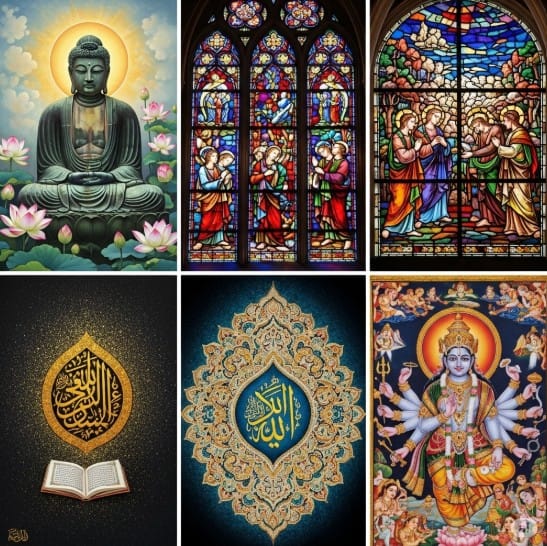
Hindu Sacred Art: Divine Manifestations in Form
In Hinduism, art plays a central role in worship. From majestic temple sculptures to colorful calendar prints of deities, visual depictions serve both spiritual and didactic purposes.
Key Features:
- Murti (idols) are not just representations—they are believed to be actual embodiments of divine energy.
- Mandala patterns symbolize cosmic order.
- Dance, architecture, and sculpture often depict stories from epics like the Ramayana and Mahabharata.
Temples such as Khajuraho, Meenakshi Temple, and Konark Sun Temple stand as living testaments to the integration of art and devotion.
Explore handpicked artworks inspired by sacred traditions at ISKUSS.
Christian Sacred Art: From Catacombs to Cathedrals
Christian sacred art has evolved over centuries—from early frescoes in Roman catacombs to soaring Renaissance masterpieces.
Major Forms:
- Icons and frescoes (especially in Eastern Orthodoxy)
- Stained glass windows illustrating biblical stories
- Sculptures and reliefs in cathedrals and basilicas
- Paintings by masters like Michelangelo, Caravaggio, and Giotto
The Renaissance was a particularly fertile era, where art became both a declaration of faith and power. The Sistine Chapel ceiling remains one of the greatest religious artworks in history.
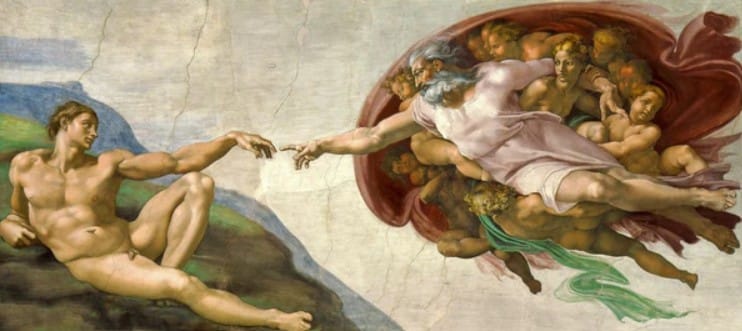
Islamic Sacred Art: Geometry and Calligraphy as Devotion
Islamic art takes a unique path. Due to aniconism—the prohibition of depicting sentient beings in religious contexts—Islamic sacred art developed around abstract beauty.
Characteristics:
- Arabic calligraphy: Often verses from the Quran
- Arabesques and geometric patterns: Reflecting infinity and divine perfection
- Architecture: Mosques like the Alhambra, Hagia Sophia, and Blue Mosque are architectural masterpieces of sacred art
Islamic art is both functional and decorative, turning even the most practical items—like lamps or ceramics—into vessels of spiritual expression.
Buddhist Sacred Art: A Path to Enlightenment
In Buddhism, art serves as a meditative and educational tool, guiding practitioners toward enlightenment.
Notable Forms:
- Thangka paintings: Portable cloth scrolls used for meditation
- Mandalas: Symbolic diagrams of the universe
- Bodhisattva and Buddha statues: Representing inner peace and compassion
- Murals in monasteries: Narrating the life of Siddhartha Gautama
Buddhist art varies greatly by region. Tibetan, Japanese, Chinese, and Thai styles all reflect different philosophical interpretations.
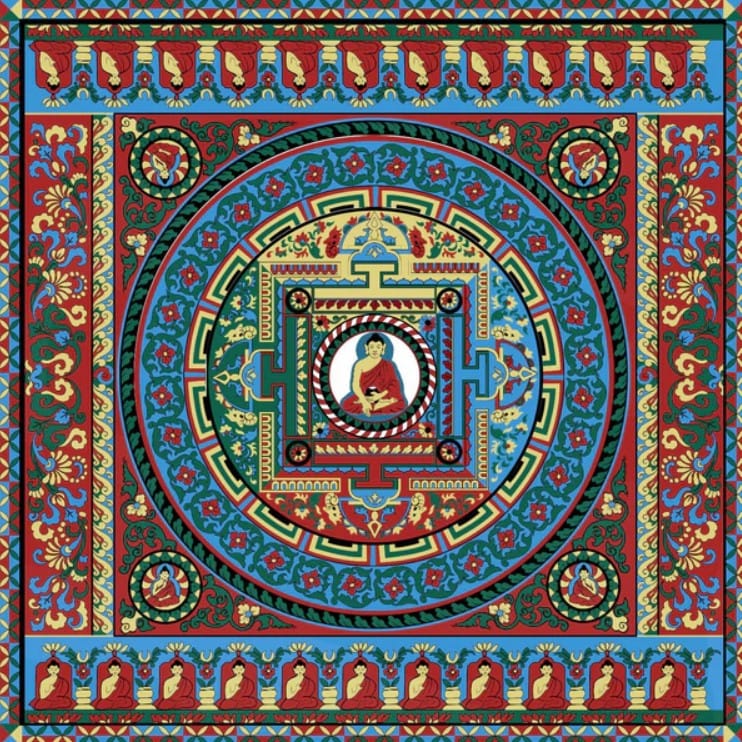
Indigenous Sacred Art: Spirit in Nature
Many indigenous cultures create sacred art rooted in nature and mythology. Art is often a part of ritual practices, storytelling, or honoring ancestors.
Examples:
- Aboriginal Dreamtime art in Australia
- Native American totem poles and sand paintings
- African tribal masks used in ceremonial dances
- Andean textiles and pottery representing spirits of the earth
These forms are interwoven with daily life and cosmology, creating a holistic spiritual aesthetic.
Jewish Sacred Art: Aesthetic of the Word
In Judaism, the word—especially the written Hebrew word—has sacred power. Art often centers around texts, rituals, and symbolism.
Key Art Forms:
- Torah scrolls and illuminated manuscripts
- Synagogue architecture and stained glass
- Ketubahs (decorated wedding contracts)
- Symbolic motifs like the Menorah, Star of David, and Tree of Life
Jewish sacred art reflects resilience, tradition, and the sanctity of learning.
Common Themes Across Sacred Art
Despite the diversity, sacred art across cultures shares several core themes:
| Theme | Example |
|---|---|
| Divine Presence | Depictions of gods, saints, or enlightened beings |
| Moral Lessons | Storytelling through images (e.g., parables, epics) |
| Sacred Geometry | Mandalas, mosque mosaics, cathedral floor patterns |
| Spiritual Journey | Buddhist murals, pilgrimage maps |
| Nature Symbolism | Trees, animals, sun, water as metaphors for life or purity |
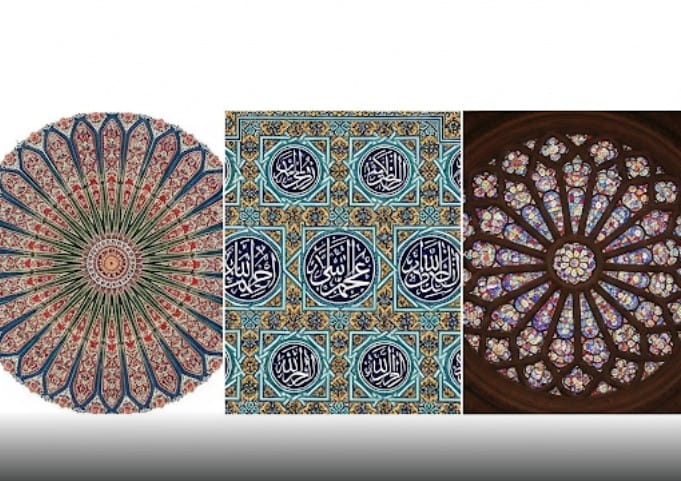
Sacred Art in the Contemporary World
In the modern era, sacred art continues to evolve. Contemporary artists are blending traditional themes with modern mediums, using digital tools, performance, and multimedia installations.
Examples include:
- Anish Kapoor’s spiritual sculptures
- Yayoi Kusama’s infinity rooms exploring the soul’s depth
- Indian artists reinterpreting mythological themes through abstract or pop art styles
Sacred art today also plays a role in interfaith dialogue, healing, and community building.
Preserving Sacred Art: Challenges and Efforts
Despite its importance, sacred art faces threats from:
- Conflict and war
- Religious intolerance
- Climate change
- Commercialization and exploitation
UNESCO and other organizations work to preserve sacred heritage through documentation and restoration projects. Sacred sites like Angkor Wat, the Vatican, and Machu Picchu are protected as World Heritage Sites for their cultural and spiritual value.
For example, UNESCO’s World Heritage List includes hundreds of sacred art sites that are globally recognized.
The Future of Sacred Art
As globalization accelerates, sacred art must adapt to new contexts:
- Virtual museums and AR experiences now bring sacred art into homes
- NFTs and blockchain are offering ways to preserve digital sacred works
- Artists are using sacred art to explore mental health, identity, and ecology
ISKUSS continues this tradition by curating and promoting works that celebrate spirituality, heritage, and innovation. Our collections echo the eternal bond between creativity and divinity.
Visit ISKUSS to explore art inspired by cultural and spiritual roots.
Conclusion
Sacred art is far more than decoration—it’s a language of the soul. It connects us to something greater, whether it be God, nature, ancestors, or our inner selves. Across cultures and centuries, sacred art has offered solace, inspiration, and understanding.
As we move further into a digital future, the role of sacred art remains vital. It reminds us of our shared humanity and the timeless pursuit of the sacred.
